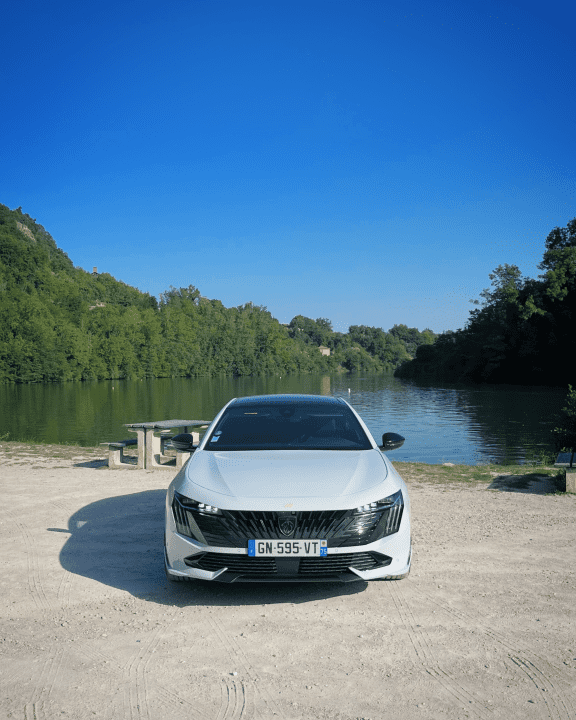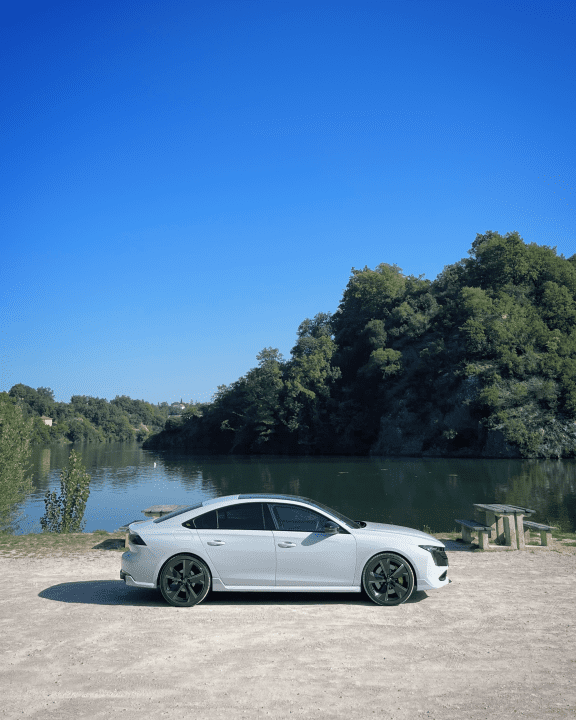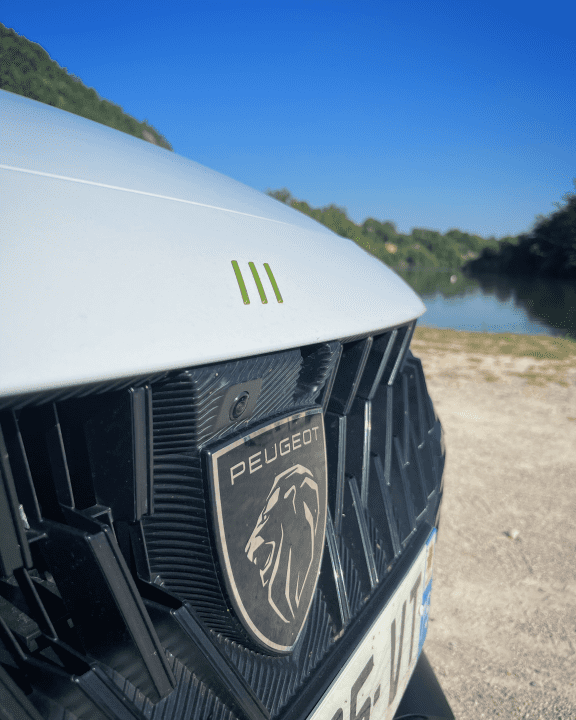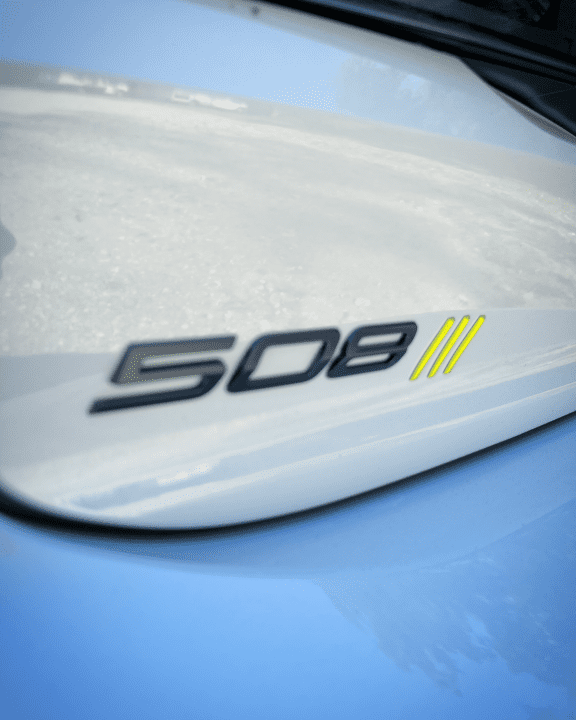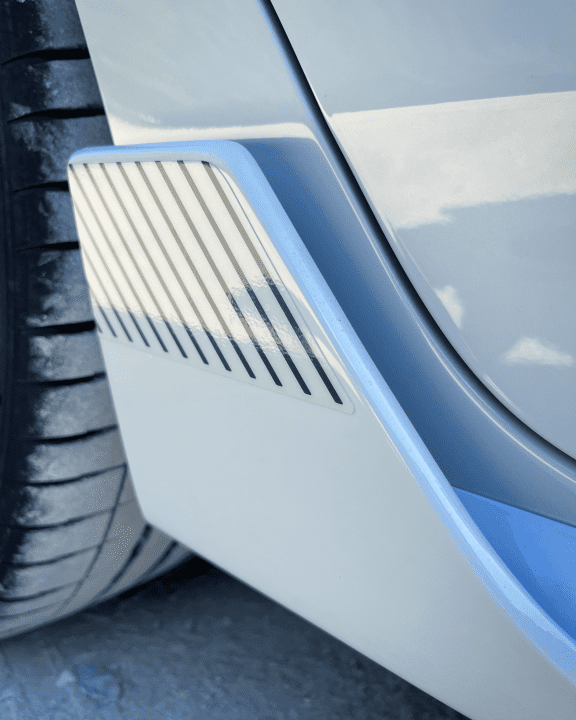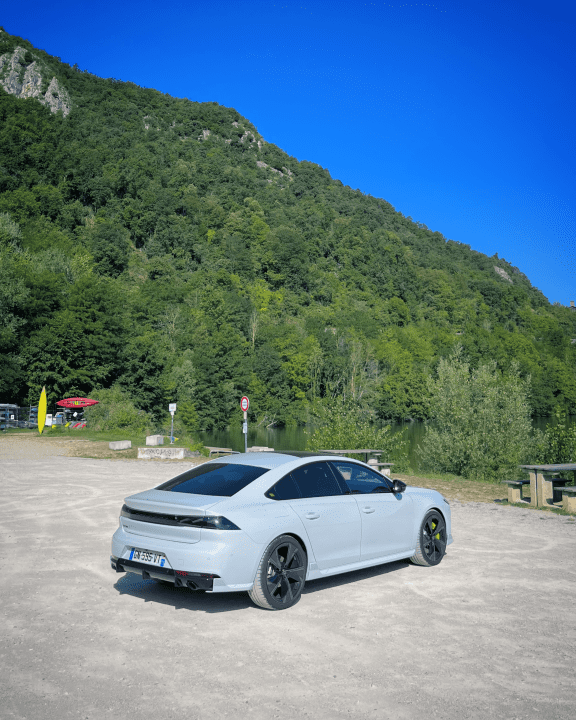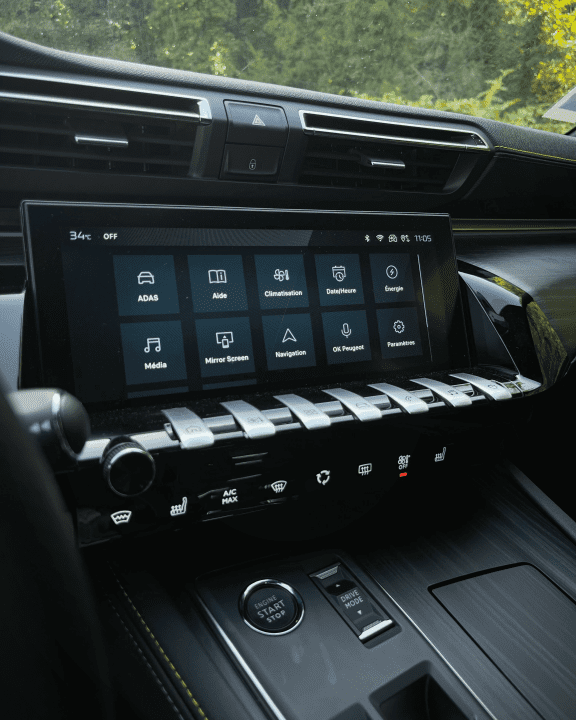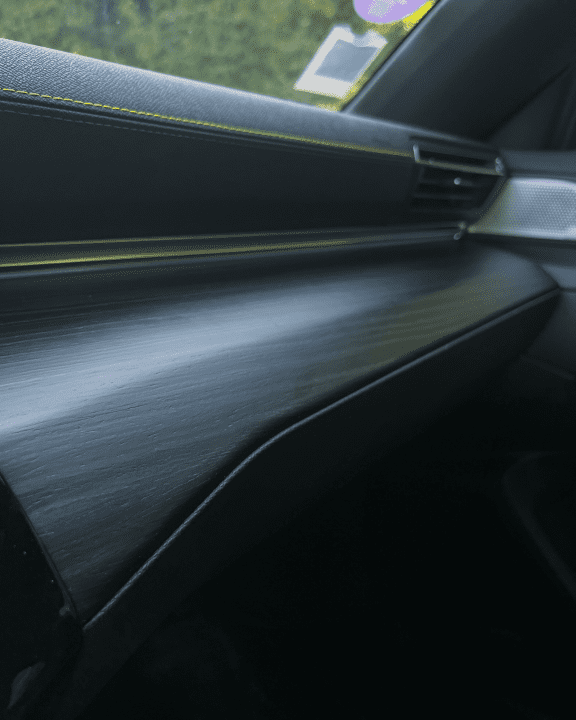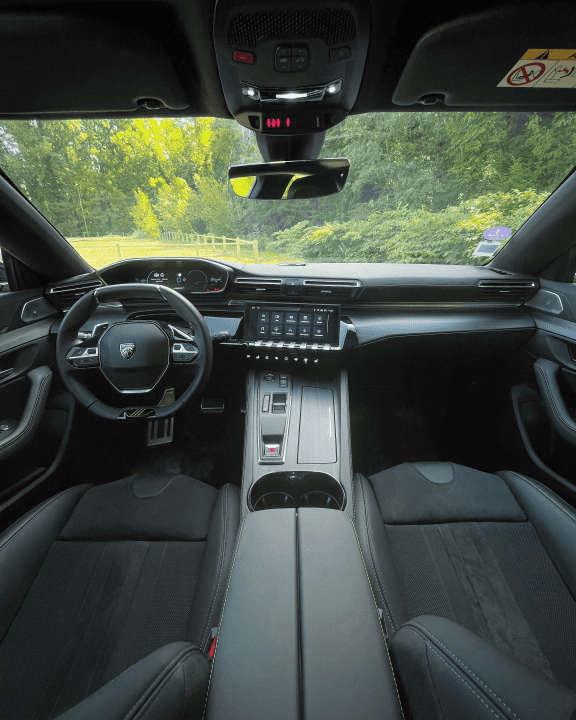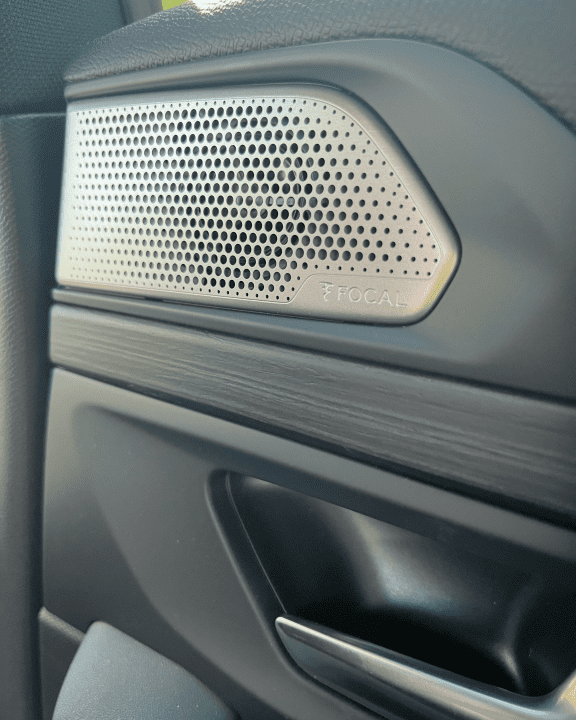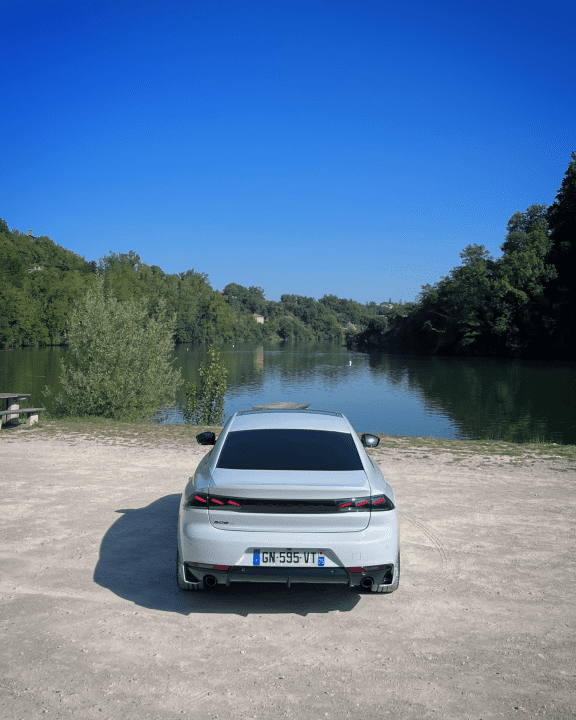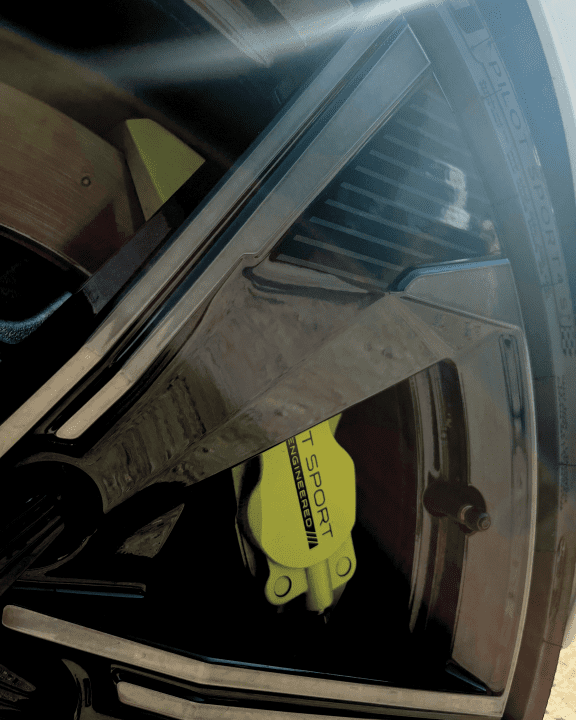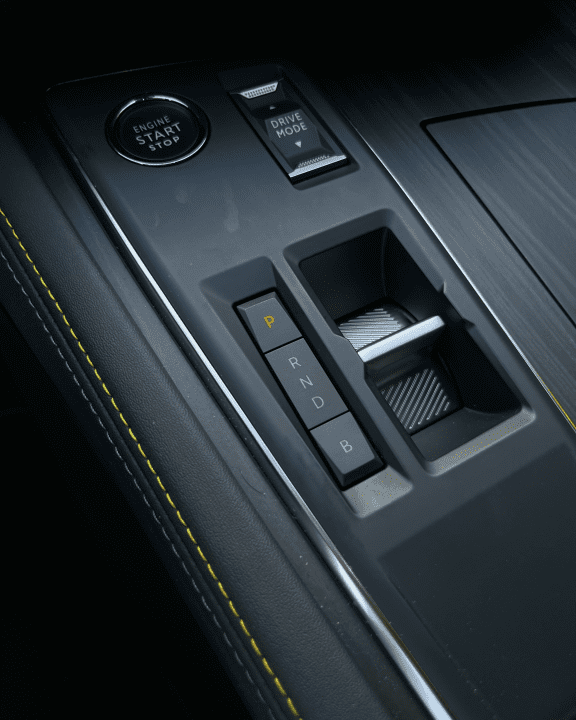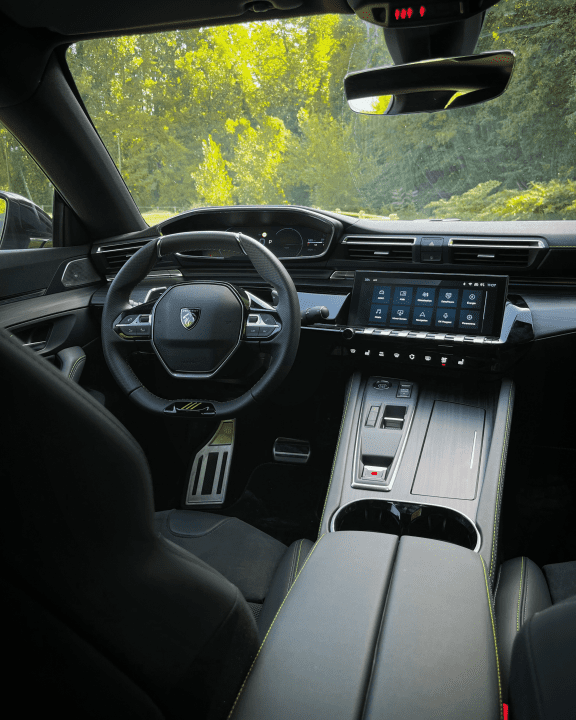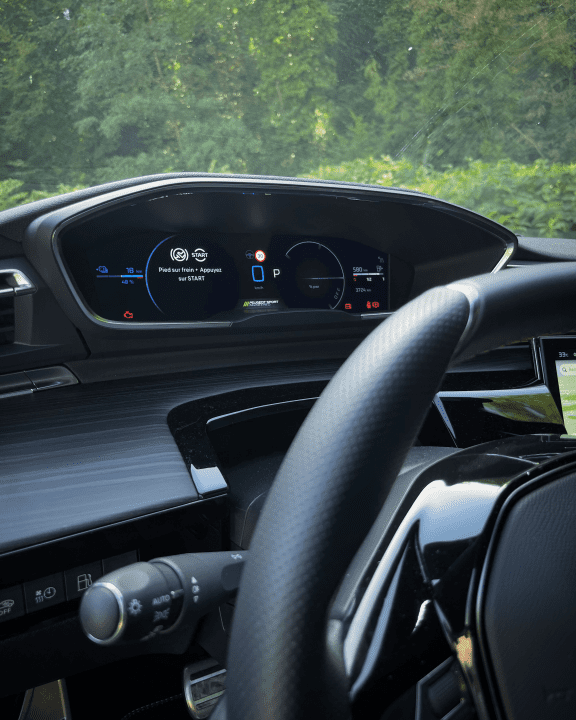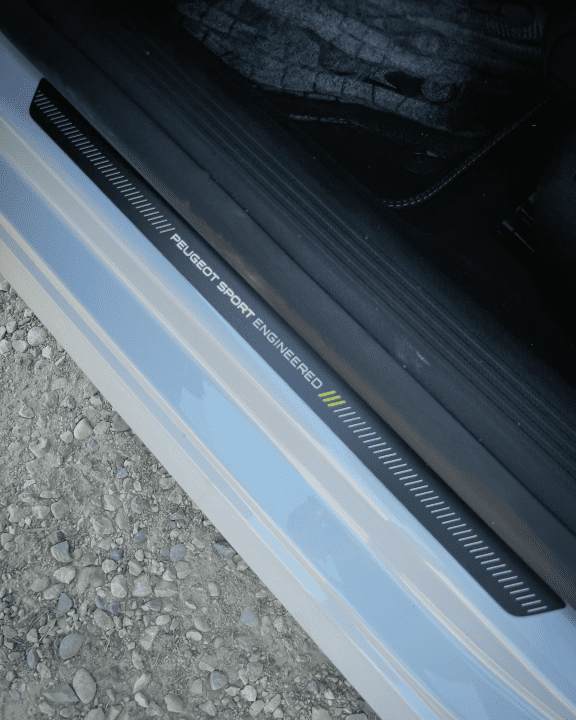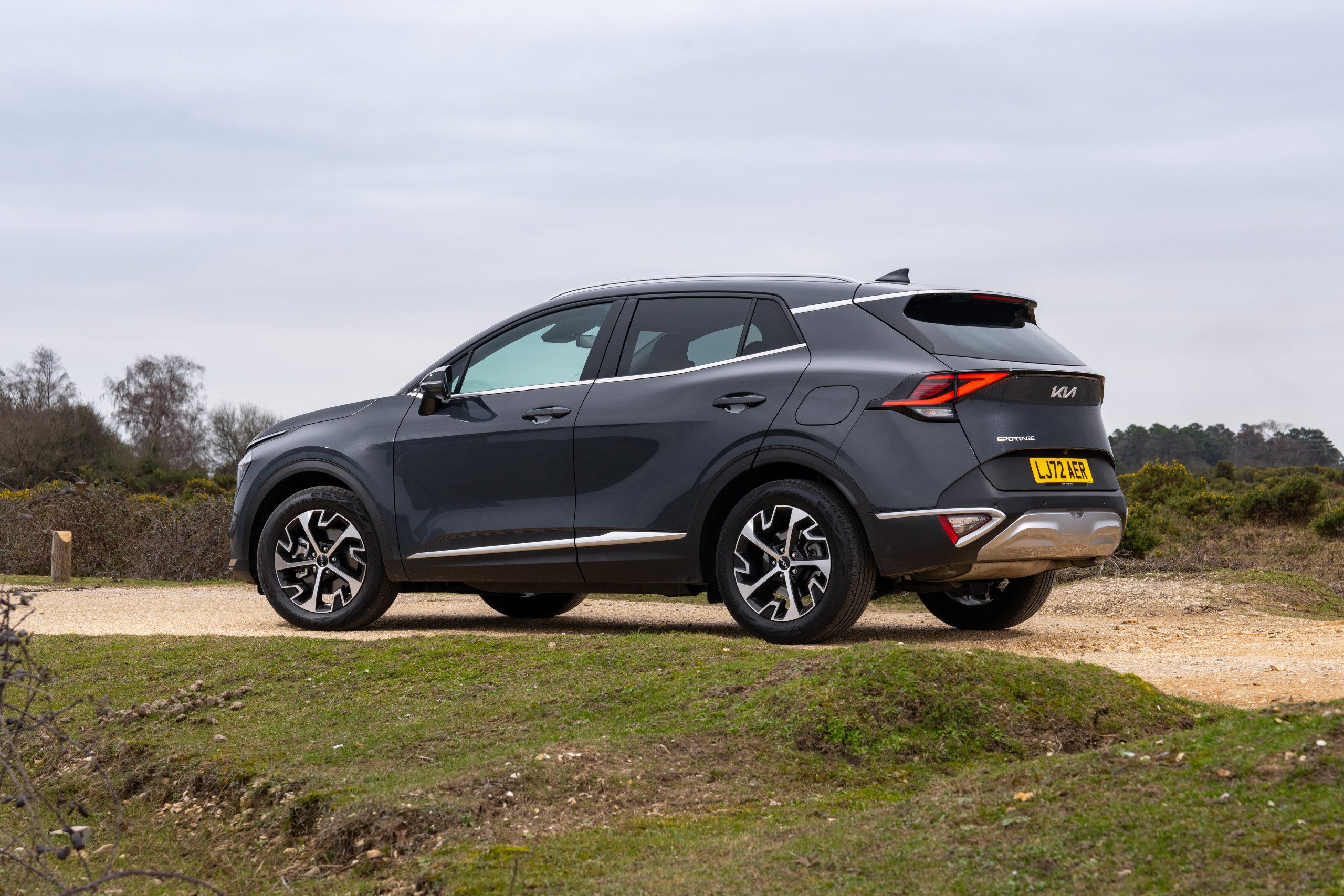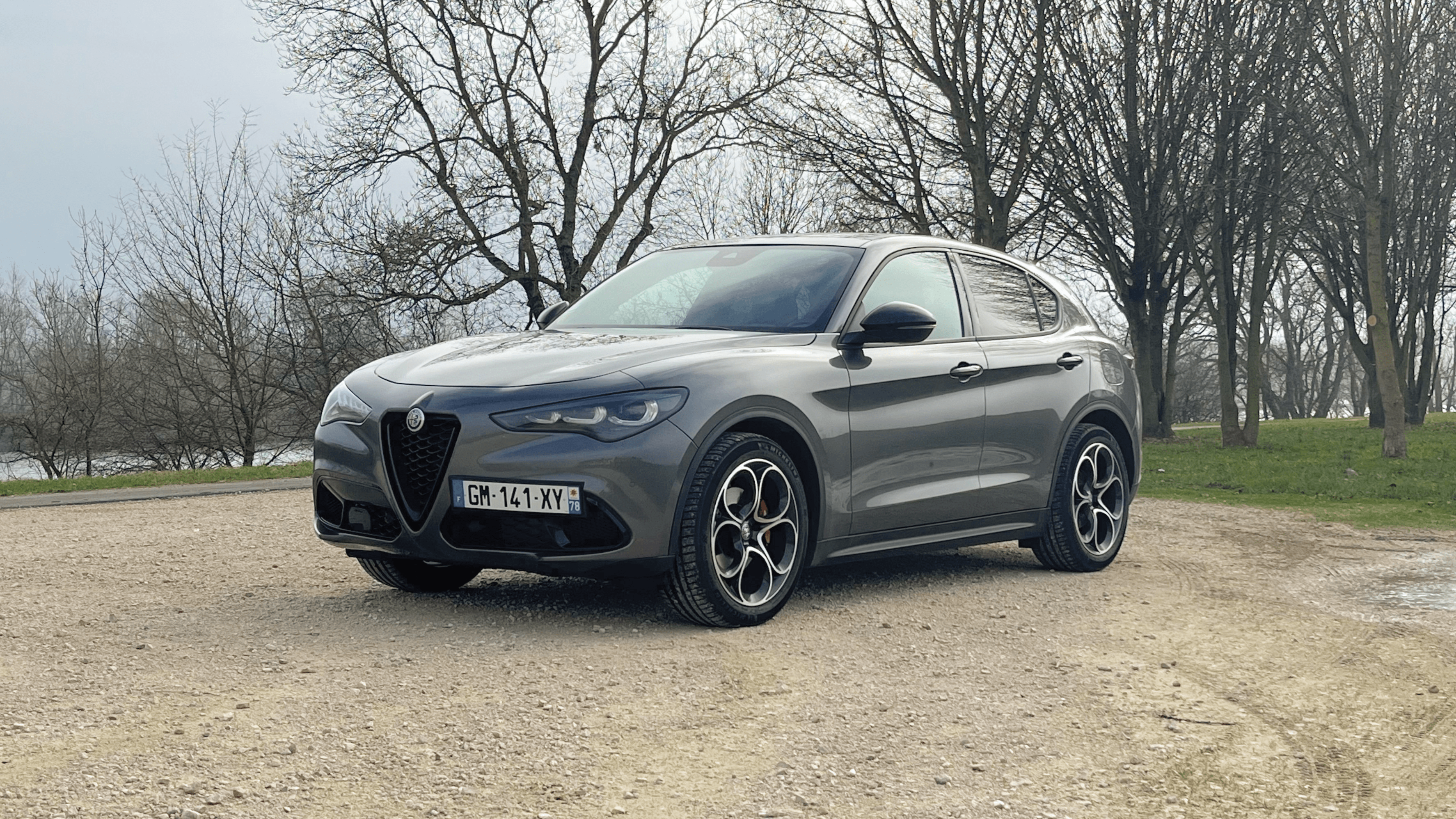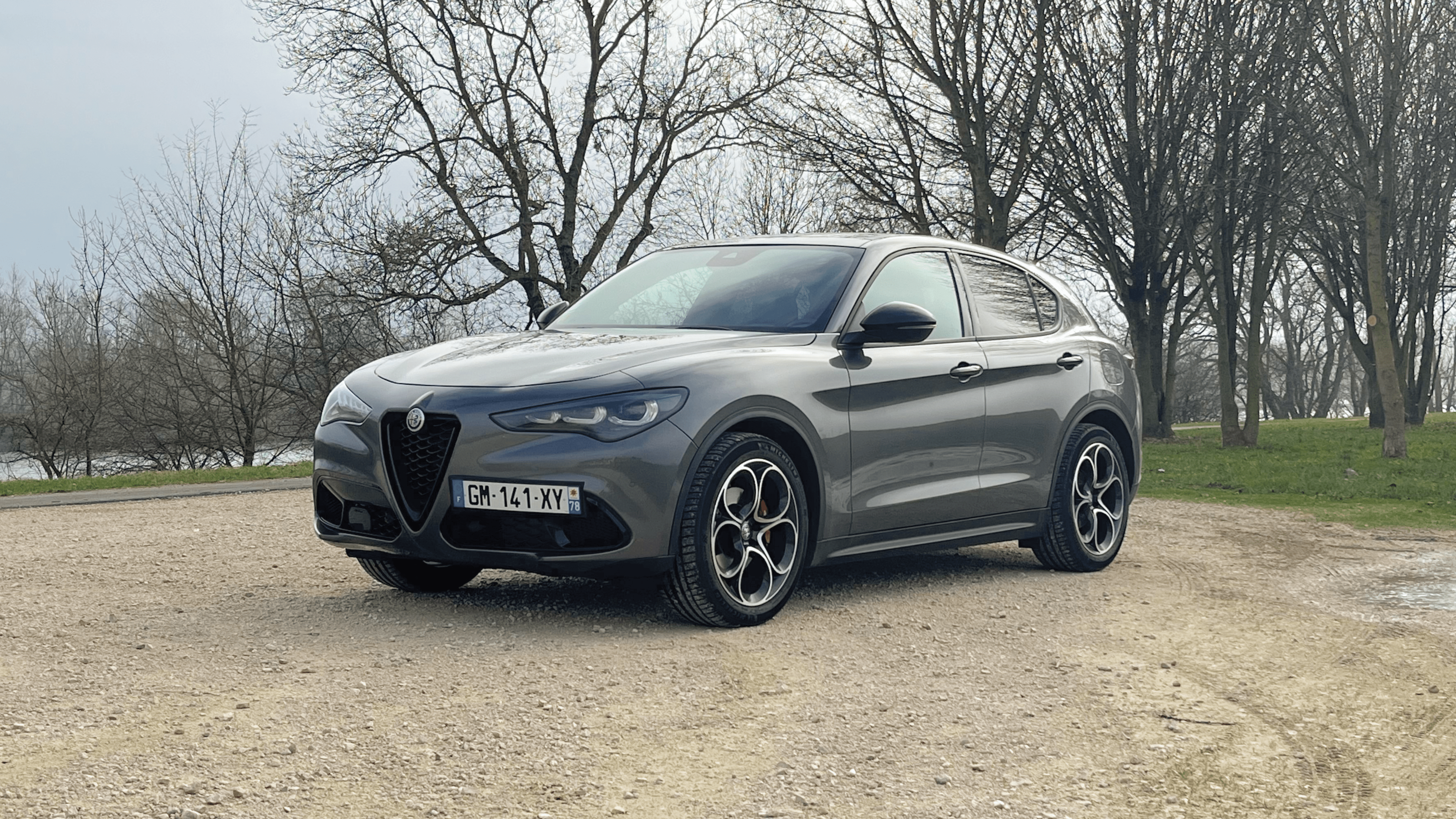Peugeot 508 PSE review (2023) – Last stand
Final round for the ICE 508
Peugeot reboots the machine. Just when we thought it had been definitively buried, the most muscular of the 508s gets a facelift in an attempt to relaunch itself. While it effectively corrects its early flaws in a number of areas, the PSE remains far from perfect in some crucial areas. And the main suspect in this case is once again the powertrain, which is too complex to make the 508 PSE a truly competent car.
With its killer looks, sleek lines and provocative stern, the 508 PSE has all the makings of a perfect villain. The fable continues on board, with a low seating position crammed into a cramped cabin, perhaps even too cramped for the rear seats. The sporty ambience is tangible, as confirmed by the thick centre console and small steering wheel, which immediately encourage spirited driving. As an aside, I could mention the Zebrano petrol veneers, the Focal sound system, the massaging seats and the night vision, all of which provide plenty of entertainment. Alas, that would be bordering on the irrelevant, because with this 508 PSE, enjoyment and road feel are infinitely more important than these secondary considerations. In fact, the 360 PS, trimotor, four-wheel drive and sports chassis with adaptive suspension listed on the specification sheet all point to the very best. At least, in theory…
An unnecessarily complex heart
When it comes to acceleration, the 508 PSE is up to the challenge, accelerating from 0 to 100 kph in 5.2 seconds. The thrust is direct and in line with what you’d expect from a vehicle of this calibre. However, its delivery is clearly not up to scratch… Even when calling up Sport mode, which is logically the most suitable for the exercise, the engine response is desperately slow. It takes almost half a second before the electric motor kicks in. And if that wasn’t enough, you have to wait another second for the main engine to finally wake up. That’s a long time, especially as the transition from electric to internal combustion generates a dreadful jolt that we could have done without. What’s more, the sound of the four-cylinder is far from memorable. Before tackling the bends comes the test of braking. Once again, it’s quite poor! The transition between regenerative braking and mechanical braking is unfortunately lacking. While you apply constant pressure with your foot, the car starts braking suddenly when the brake pads finally come into play. All in all, it’s hard to have any confidence in the brake pedal, even though it’s the key to sporty driving. It’s a pity, because the system, taken over from the now-defunct 308 GTI, proves to be rather effective…
There’s something heavy behind…
Can the French car break the spell when it comes to handling? Its dynamic capabilities are indeed good and the grip more than satisfactory. The honour goes to the excellent Michelin Pilot Sport 4S tyres. The front end is also quite responsive, thanks to a steering system that responds to the touch of a finger. However, as the driving gets more aggressive, you get the feeling that the 12.4 kWh battery, which weighs a lot, is a real nuisance. There’s no doubt that the PSE would have been much more fun to drive if it had been purely combustion powered. So what’s it like when cruising? Suspension comfort is satisfactory despite the 20-inch wheels, although the first version of the PSE was even softer in my memory. As it speeds along the long stretches of motorway, the Peugeot does a good job of filtering out air noise, but the tyres are too audible. Then came the PSE’s final complication, namely its completely ridiculous range on fast roads. Its 43-litre fuel tank doesn’t allow it to cover more than 500 km, a laughable figure for such a car. Fortunately, the sedan is very economical, even when the battery is flat. In this case, you can cruise at around 6 litres/100 km without any problem. That’s good, let’s face it. But who would really want to drive slowly behind the wheel of such a car? Not me, or even you, I suppose. A quick word on the electric part: 38 km of range is average, but it’s enough for everyday city driving. It’s a shame, though, that peripheral visibility is so poor. And don’t count on the 360° camera to get you out of trouble. In reality, there are only two modules, each of which retransmits the outside environment as the vehicle moves at a snail’s pace. In short, it’s a mess…
All inclusive
On the other hand, the PSE offers a plethora of equipment, ticking off virtually all the options available on the 508, with the exception of the sunroof, which remains an extra. At €72,720, the final bill is affected, even if this price is within the average for the category. In spite of everything, I can only advise you to opt for the 225 PS hybrid version in GT trim, which is already well-equipped, has more than enough performance and, above all, costs €19,000 less than our – very – expensive PSE. And for long-distance drivers, there’s of course the diesel model, which is even more economical and has an unbeatable range. Too heavy to be really fun, and killed off by its paltry range, the sporty hatchback leaves a taste of unfinished business. At the end of the day, the 508 PSE remains a confused car that isn’t great in areas it’s supposed to be.
